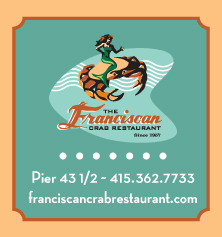The Urban Home & Garden
Beneficial, beautiful bugs, bees and butterflies!

Green hairstreak butterfly
Photo: Matt Zlatunich
Both pest insects and beneficial insects have always been around, maintaining nature’s balance. They fill two main roles in the garden ecosystem: pollinators of plants and predators of pest insects as a natural form of pest control. When native and other desirable plants are allowed to bloom, they attract beneficial insects with their nectar and pollen. Beneficial insects can also be purchased to add to your garden.
Ladybugs add attractive color to a garden while fighting pests! Release them at night (so they don’t fly away) at the base of plants. They naturally climb up plants and will eat aphids, mites, thrips, leafhoppers and many other destructive soft bodied insects. They continue until the bad guys are gone, laying their own eggs in the process. When new pests arrive, fresh ladybugs will be waiting.
Praying mantids are an all-purpose guardian of the garden and eat a wide variety of insects, including crickets, aphids and spiders – virtually any pest that moves. Since they don’t fly, they stay right in the area where they are released.
Beneficial nematodes assault flea larvae in the soil, bark or ground litter. They also attack more than 230 kinds of garden pests and go to work quickly.
Earthworms such as red wrigglers burrow 24 hours a day and aerate the soil, bringing oxygen to the roots. Organic material is turned into nutrient-rich casting.
Here are some suggestions of plants that will attract beneficial bugs to your garden:
• Parsley family (parsley, fennel, coriander, dill and chervil)
• Sunflower family (sunflowers, daisies, asters, and cosmos)
• Sweet alyssum, native buckwheat, baby blue eyes, and tidy tips
Mason bees are the workhorse of the bee family – more so than their cousins, the honey bee or bumble bee, which might take a day off when it is raining. Nearly one-third of our food supply relies on bees. Surely we all have a childhood memory of being stung by a bee in the summer, but mason bees are generally nonaggressive. Unlike honey bees that live and work in a colony, the mason bee flies solo and is much more efficient at collecting nectar and pollinating plants. Native plants work best at attracting native bees and the following are just some of the plants that will draw mason bees to your garden:
• Foxglove
• Rosemary
• Marjoram
• English lavender
Still afraid of bees? Check out Garden for the Environment’s class offered on Saturday, May 15 from 10 a.m.–noon at their garden at 7th Avenue at Lawton. The cost is $15, but no one is ever turned away for lack of funds. Experienced local beekeepers Susan Prentice and Paul Koski will host the class. For more information, call 415-731-5627 or visit
www.gardenfortheenvironment.org.
Green hairstreak butterflies once flew in abundance throughout the City, but as their habitat has given way to development, they are now restricted to just a few isolated neighborhoods in San Francisco: Hawk Hill, Golden Gate Heights, Rocky Outcrop, and Grandview Parks. Just the size of a nickel, the green hairstreak sports brilliant green gossamer wings. The good folks at Nature in the City are working hard to reverse the dwindling numbers by encouraging green hairstreak-loving native plant cultivation, thus reconnecting the isolated population. Visit www.natureinthecity.org for information on their occasional hosted treks through the green hairstreak corridor.
Green Hairstreak butterflies love these native plants:
• Seaside daisy
• Coast buckwheat
• Deerweed
• Sea thrift
• Coast strawberry
• California blackberry
• Wild cucumber
Julia Strzesieski is the marketing coordinator at Cole Hardware and can be reached at
[email protected].


